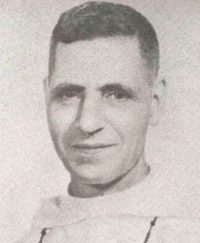I had just visited another concentration camp—that of Santo Tomas. There are actually some 3,000 internees and in some more time, a few thousand more are expected from the south. The Japanese guards deal with them liberally, without getting involved in the private life of the prisoners. In the two hours during which I went around the camp and many of its structures, I saw no other sentries aside from those at the gates.
The prisoners are receving a monthly allocation of some ₱30,000, with a committee in charge of utilizing it to provide for the prisoners’ needs. Another Committee is responsible for peace and order with some 150 Americans acting as policemen. Everybody is given an assignment according to his talents. They have to do all the work within the Camp. Some American and Spanish Dominican priests are allowed to enter the Camp everyday to celebrate Mass and give religious instruction to the children. They also give lectures to the adults about social and apologetic questions, and watch over the properties of the University which are still being stored there.
A good portion of the Camp has been converted into a vegetable garden. According to the foreman, they harvest more than a thousand kilos of vegetables a month. These are apportioned among the garden tenders, the hospital and—if there is a surplus—among those who need them most.
The prolonged confinement, the weariness, the monotony and the lack of nutrition are already telling on the prisoners, taxing the spirit even of the most optimistic. During the earlier months, they had been living in the hope of an early liberation. Although this hope is revived from time to time, it is withering like a flower deprived of the sunlight of reality. Those who still have money and relatives or friends in liberty receive support with which they supplement their meager diet and are provided with clothing, shoes, cigarettes, etc. For the others, nostalgia becomes doubly burdensome.
